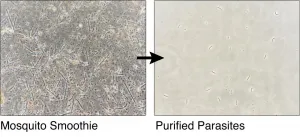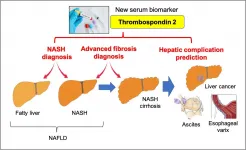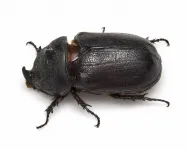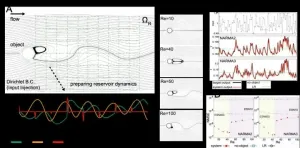INFORMATION:
Religious participation makes both old and young more likely to trust their neighbors and donate to charity
2021-06-17
(Press-News.org) "Boomers" and "millennials" who go to church are more likely to trust their neighbours and donate to charity, according to a new study.
Religious beliefs and participation help close the gaps in civic participation between millennials and their elders, researchers have found.
Experts have measured the social "capital" religion gives people of all ages. They found those in their 20s and 30s were less likely to join groups and associations, and less likely to be religious, but being involved with the church gave them more "religious capital" than older people who also attended services.
The study shows boomers often have more social capital than millennials and are more likely to be religious. Religious millennials may be more likely to encounter and interact with boomers, and this could "boost" the value of their religious capital. Religious boomers, in contrast, are likely to encounter others of the same age with similar social lives, so their church-based interactions have less of a social benefit.
The research, by Stuart Fox from Brunel University, Ekaterina Kolpinskaya, from the University of Exeter, Jennifer Hampton and Esther Muddiman, from the Wales Institute of Social and Economic Research and Data (WISERD) based at Cardiff University and Ceryn Evans from Swansea University, is published in The Sociological Review.
Researchers used data from the UK's Household Longitudinal Study (UKHLS). The sample included information about all those born between 1946 and 1958, and those born after 1982. They measured religious participation through self-reported frequency of attendance at religious services.
Researchers found participating in religion gave boomers and millennials more social trust, despite how often they attended church. Those who participated at least once a year were more likely to trust their neighbours - by around four to five percentage points.
Millennials who said their religious belief made "some" difference to their daily life were around four percentage points more likely to donate to charity than those who said it didn't make difference, while those who said it made ""much" difference are seven percentage points more likely.
Boomers who attended religious services at least once a week were the most likely to donate to charity, and around eight percentage points more likely than those of a similar age who didn't attend church. The same is true for millennials, although the difference between those who participate weekly and who do not participate at all is 12 points.
Dr Fox said: "While lower levels of religious capital are contributing to lower levels of social capital among millennials, religious activity is also a more effective source of social capital for millennials than their elders.
"We found millennials are less likely to join groups or associations than boomers, regardless of their religious participation, so have less social capital."
Researchers found the effect of religion on membership of community associations is limited, apart from older Baptists and Methodists, who were around eight per cent and four per cent respectively more likely to join community associations than their peers who are involved in other religions, or none.
Millennials who said religious beliefs made a big difference to their daily lives were significantly more likely to join community associations - by around 13 points. The research shows millennials who participated in religious services at least once a year - or once a month, or once a week - is around 10 points more likely to join a community association than one who does not. For boomers the same difference is 3 points.
Dr Kolpinskaya said: "We found religious participation increases associational membership for both generations regardless of its intensity: what matters is the difference between boomers or millennials who participate in religious activity at all, and boomers or millennials who do not."
ELSE PRESS RELEASES FROM THIS DATE:
'Mosquito smoothie' innovation boosts future malaria vaccine potential
2021-06-17
A faster method for collecting pure malaria parasites from infected mosquitos could accelerate the development of new, more potent malaria vaccines.
The new method, developed by a team of researchers led by Imperial College London, enables more parasites to be isolated rapidly with fewer contaminants, which could simultaneously increase both the scalability and efficacy of malaria vaccines.
The parasite that causes malaria is becoming increasingly resistant to antimalarial drugs, with the mosquitoes that transmit the disease also increasingly resistant to pesticides. This has created an urgent need for new ways to fight malaria, which is the world's third-most deadly disease in under-fives, with a child dying from malaria every two minutes.
Existing ...
Innovative mouse model pumps new blood into study of pediatric heart disease
2021-06-17
Ibaraki, Japan - Severe childhood restrictive cardiomyopathy is a condition that causes the muscles in the walls of the heart to become stiff, so that the heart is unable to fill properly with blood. A mutation in a protein called BAG3 is known to result in restrictive cardiomyopathy, muscle weakness, difficulty taking in enough oxygen, and damage to multiple peripheral nerves, often shortening the patient's lifespan significantly. Until now there has been no successful model for the disease, making it extremely difficult to study.
However, researchers in Japan and Germany have now created a mouse model that mimics the human pathology, allowing the disease to be studied more easily. The team's data suggest ...
A simple blood test to identify patients at risk of nonalcoholic fatty liver disease
2021-06-17
Osaka, Japan - Nonalcoholic fatty liver disease (NAFLD) is the most common liver disease worldwide and can progress to liver cirrhosis, liver failure or cancer. Currently, nonalcoholic steatohepatitis (NASH) diagnosis requires an invasive liver biopsy which can lead to procedural complications. Now, researchers at Osaka University working with international collaborators have identified a noninvasive biomarker that can identify patients at risk of NAFLD complications using a simple blood test.
Owing to the increasing prevalence of obesity worldwide, ...
Hydrophobic copper catalyst to mitigate electrolyte flooding
2021-06-17
The electroreduction of carbon dioxide (CO2) to produce value-added multicarbon compounds is an effective way to cut down CO2 emission. However, the low solubility of CO2 largely limits the application of related technology.
Although gas diffusion electrode (GDE) can accelerate the reaction rate, the instability of the catalysts caused by electrolyte flooding hinders further reaction.
Recently, inspired by setaria's hydrophobic leaves, Prof. GAO Minrui's team from University of Science and Technology of China developed Cu catalyst composed of sharp needles which possesses high level ...
Heat spells doom for Aussie marsupials
2021-06-17
When animals are hot, they eat less. This potentially fatal phenomenon has been largely overlooked in wild animals, explain researchers from The Australian National University (ANU).
According to lead author Dr Kara Youngentob, it means climate change could be contributing to more deaths among Australia's iconic marsupials, like the greater glider, than previously thought.
"Hot weather puts all animals off their food. Humans can deal with it fairly well; we usually have plenty of fat reserves and lots of different ...
'Unshackled' palm-destroying beetles could soon invade Australia
2021-06-17
A destructive pest beetle is edging closer to Australia as biological controls fail, destroying home gardens, plantations and biodiversity as they surge through nearby Pacific islands.
University of Queensland researcher Dr Kayvan Etebari has been studying how palm-loving coconut rhinoceros beetles have been accelerating their invasion.
"We thought we'd outsmarted them," Dr Etebari said.
"In the 1970s, scientists from Australia and elsewhere found that coconut rhinoceros beetles could be controlled with a beetle virus from Malaysia.
"This virus stopped the beetle in its tracks and, for the last 50 years or so, it more-or-less stayed put ...
After the big storm: How to supply emergency power
2021-06-17
As demand for electricity rises and climate change brings more frequent and extreme storms, residents in rural and suburban communities must have access to the minimal electricity they need to survive a large, long-duration (LLD) power outage.
A new study in the journal Risk Analysis compared strategies for providing emergency power to residents in two hypothetical New England communities during such an event. The results suggest that cooperative strategies like sharing a higher capacity generator among multiple homes cost 10 to 40 times less than if each household used its own generator.
"Our findings provide impetus for utilities, regulators, ...
Passing the COVID test in just five minutes
2021-06-17
Osaka, Japan - A team of scientists headed by SANKEN (The Institute of Scientific and Industrial Research) at Osaka University demonstrated that single virus particles passing through a nanopore could be accurately identified using machine learning. The test platform they created was so sensitive that the coronaviruses responsible for the common cold, SARS, MERS, and COVID could be distinguished from each other. This work may lead to rapid, portable, and accurate screening tests for COVID and other viral diseases.
The global coronavirus pandemic has revealed the ...
Vortex, the key to information processing capability: Virtual physical reservoir computing
2021-06-17
[Background]
In recent years, physical reservoir computing*1), one of the new information processing technologies, has attracted much attention. This is a physical implementation version of reservoir computing, which is a learning method derived from recurrent neural network (RNN)*2) theory. It implements computation by regarding the physical system as a huge RNN, outsourcing the main operations to the dynamics of the physical system that forms the physical reservoir. It has the advantage of obtaining optimization instantaneously with limited computational resources by adjusting linear and static readout weightings between the output and a physical reservoir without requiring optimization of the weightings by back propagation. However, since the information processing capability depends ...
Close-up look at brain uptake of omega-3
2021-06-17
SINGAPORE, 17 June 2021 - New details on the structure and function of a transport protein could help researchers develop drugs for neurological diseases that are better able to cross the blood-brain barrier. The findings were published in the journal Nature by researchers at Columbia University Vagelos College of Physicians and Surgeons, Duke-NUS Medical School, Weill Cornell Medicine and colleagues.
Omega-3 fatty acids, like docosahexaenoic acid (DHA), are important for brain and eye development. They are derived mainly from dietary sources and converted ...





